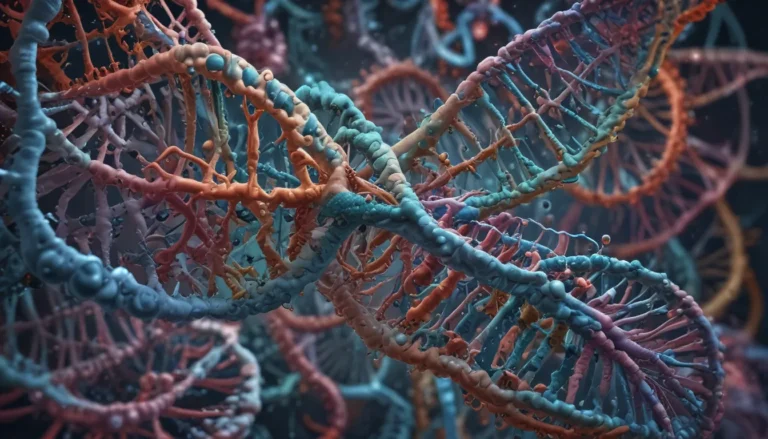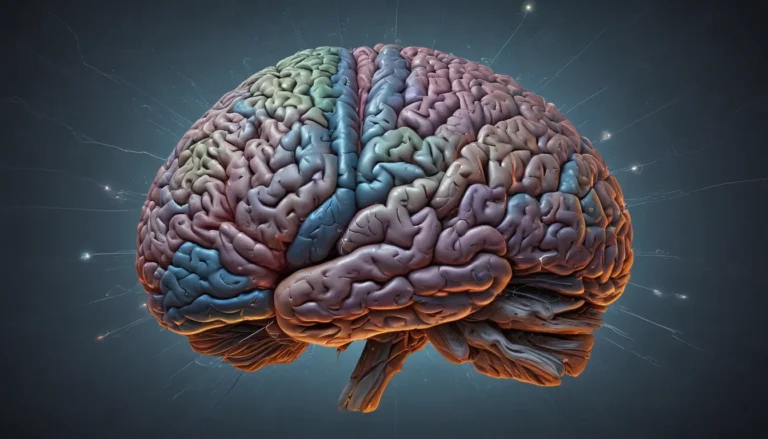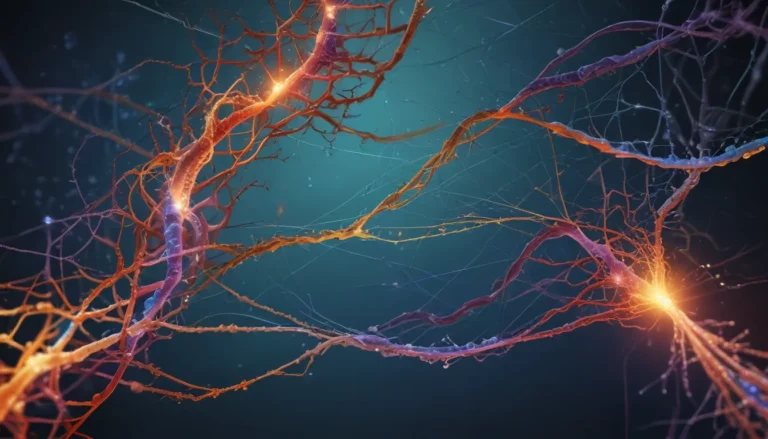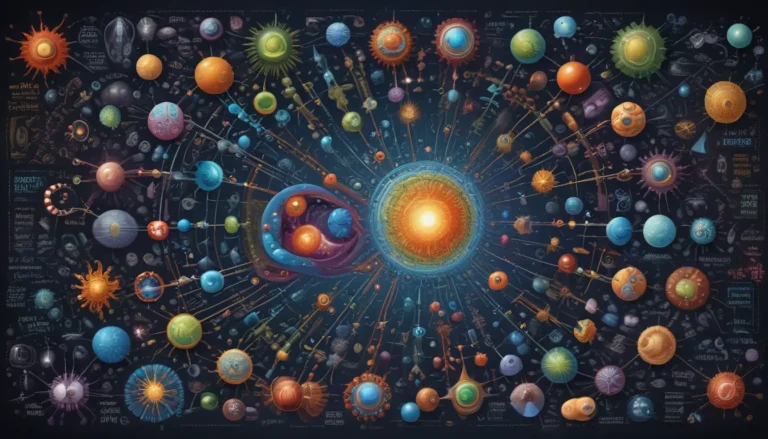A Note About Images: The images used in our articles are for illustration purposes only and may not exactly match the content. They are meant to engage readers, but the text should be relied upon for accurate information.
Have you ever marveled at the instinctual behaviors exhibited by organisms from the moment they are born? Innate behavior, defined as the natural, genetic actions and responses that organisms possess without the need for prior learning, is a marvel of the natural world. From the tiniest creatures to the most complex animals, innate behaviors shape the survival strategies and interactions of diverse organisms.
In this article, we will delve into 20 extraordinary facts about innate behavior that illuminate the wonders of nature. Prepare to be amazed by the intricate mechanisms behind some of the most fascinating actions observed in the animal kingdom. From newborn animals’ captivating instincts to the astonishing behaviors displayed by insects and birds, the realm of innate behavior is a treasure trove of biological marvels.
Unveiling the Mysteries of Innate Behavior:
1. Innate behavior is genetically programmed.
Unlike learned behavior, innate behavior is ingrained in an organism’s genes and is present from birth. It serves as a built-in survival guide, guiding animals to thrive without conscious thought.
2. Innate behavior spans across various species.
From animals to insects and even plants, innate behaviors can be observed in a wide range of organisms. These innate traits are integral to their survival in their natural habitats.
3. It is crucial for animal survival.
Many innate behaviors, such as foraging for food, constructing nests, or undertaking long migrations, are essential for an animal’s survival in the wild.
4. Innate behavior is unlearned and instinctive.
Organisms exhibit innate behaviors without the need for external stimuli or instruction. These behaviors come naturally to them, driven by their genetic programming.
5. It is often triggered by specific stimuli.
Innate behaviors are typically activated by specific environmental cues or stimuli, known as releasers. These triggers prompt the organisms to display instinctual actions.
6. Innate behavior can be influenced by experience.
While innate behavior is genetically predetermined, an organism’s experiences and interactions with the environment can still modulate and shape these behaviors.
7. It is prevalent in humans as well.
Humans also showcase innate behaviors such as reflex actions, suckling in infants, and certain emotional responses that are innate and ingrained from birth.
8. Innate behaviors can be observed in newborns.
Even newborn babies exhibit innate behaviors like the rooting reflex and the grasp reflex, demonstrating the innate nature of certain responses.
9. Innate behavior does not require conscious thought.
The execution of innate behavior does not involve conscious decision-making or cognitive processes, showcasing the automatic nature of these instinctual actions.
The Intricacies of Innate Behavior:
10. It is essential for reproductive activities.
Innate behaviors play a vital role in reproduction, encompassing courtship displays, mating rituals, and parental care activities critical for species survival.
11. Some innate behaviors are species-specific.
Certain innate behaviors are unique to particular species, enabling effective communication, hierarchy establishment, and successful species recognition.
12. Innate behavior can be adaptive.
The innate behaviors exhibited by organisms are often advantageous, aiding them in adapting to their environments effectively and ensuring their survival.
13. It can be observed in complex tasks.
Innate behavior is not limited to simple actions but can also be witnessed in intricate activities like bird migration and the dance communication of bees.
14. Innate behaviors can be exhibited across generations.
Through genetic inheritance, innate behaviors are passed down from one generation to the next, ensuring their continuity and preservation.
15. It is influenced by genetic variation.
Genetic variations within a population can lead to differences in innate behaviors, contributing to individual fitness and adaptability.
16. Some innate behaviors are automatic and rapid.
Many innate behaviors are reflexive and occur without conscious control, allowing for swift and immediate responses in critical situations.
17. It is essential for social interactions.
Innate behaviors play a crucial role in establishing social hierarchies, fostering cooperation, and facilitating communication within groups and communities.
18. Innate behavior can be instigated by specific cues.
Certain innate behaviors, like the egg-rolling behavior of mother birds, are triggered by specific cues associated with their function or purpose.
19. Innate behaviors are observed across all ages.
Innate behaviors can be witnessed in organisms of all ages, from newborns to adults, showcasing the enduring presence of these instinctual actions.
20. Innate behavior can be influenced by environmental factors.
While genetics primarily determine innate behaviors, environmental factors can also shape their expression and development, highlighting the interplay between nature and nurture.
These 20 extraordinary facts about innate behavior provide a glimpse into the fascinating and intricate nature of this innate phenomenon. Whether it’s a lion hunting in the wild, a bird constructing a nest, or a child reaching out to grasp an object, innate behaviors are integral to the fabric of the natural world, shaping the behaviors and survival strategies of a diverse array of organisms.
Exploring the Realm of Innate Behavior:
Innate behavior is a captivating subject that offers a window into the innate instincts and behaviors that govern the lives of organisms. By unraveling the mysteries of innate behavior, we gain insights into the mechanisms that underpin survival and reproduction in the natural world. It reminds us of the remarkable diversity and adaptability of life on Earth, honed over millions of years of evolution.
FAQs:
Q: What is innate behavior?
A: Innate behavior refers to the natural, instinctive actions and responses exhibited by organisms from birth without the need for prior learning or experience.
Q: How is innate behavior different from learned behavior?
A: Innate behavior is genetically programmed and does not require learning, while learned behavior is acquired through experience or exposure to the environment.
Q: Can innate behavior be observed in humans?
A: Yes, humans exhibit innate behaviors such as reflexes, emotional responses, and social behaviors from birth.
Q: Can innate behaviors be modified or influenced?
A: While innate behaviors are largely fixed, environmental factors and social interactions can influence their expression and development to some extent.
Q: Do all organisms exhibit innate behavior?
A: Yes, innate behavior is present in all organisms and is crucial for their survival and reproduction across different species and habitats.
Delve deeper into the captivating world of animal behavior and explore the intricate workings of genetic and environmental influences on behavior. From the fascinating realm of behavioral ecology to the secrets of neurobiology, each field offers a unique perspective on the complex tapestry of life, waiting to be discovered by curious minds.
By exploring the extraordinary realm of innate behavior, we gain a deeper understanding of the innate instincts and behaviors that shape the lives of organisms across the globe. Dive into this captivating world and unravel the mysteries of nature’s innate marvels.






